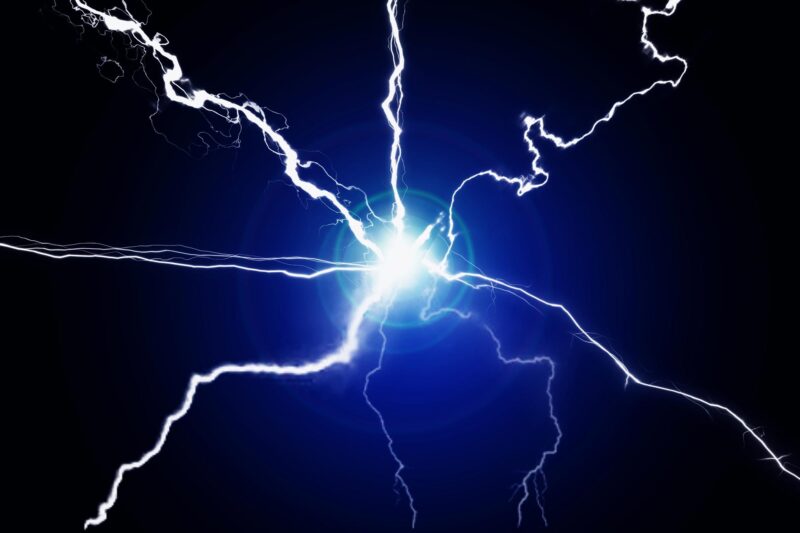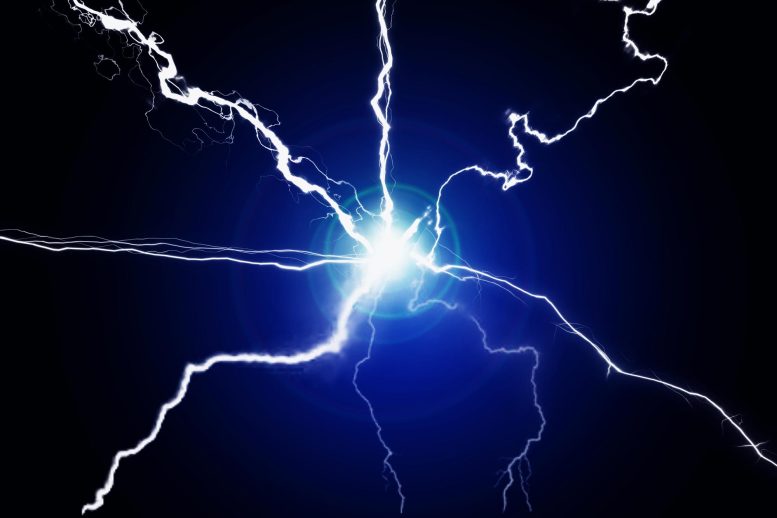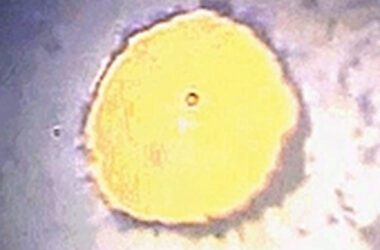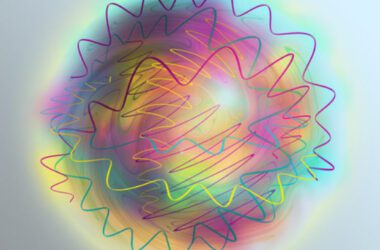Des recherches menées par des physiciens du Lawrence Livermore National Laboratory (LLNL) ont prouvé l’existence de neutrons produits par des réactions thermonucléaires à partir d’un dispositif Z-pinch stabilisé à flux cisaillé, ce qui pourrait contribuer à faire progresser une autre “voie viable” vers l’énergie de fusion.
Les chercheurs ont utilisé des techniques de modélisation informatique avancées et des appareils de mesure diagnostique perfectionnés au laboratoire pour résoudre un problème vieux de plusieurs décennies, à savoir distinguer les neutrons produits par des réactions thermonucléaires de ceux produits par des instabilités provoquées par des faisceaux d’ions pour des plasmas dans le régime de fusion magnéto-inertielle.
Bien que les recherches précédentes de l’équipe aient montré que les neutrons mesurés à partir de dispositifs Z-pinch stabilisés par flux cisaillé étaient “cohérents avec la production thermonucléaire, nous ne l’avions pas encore complètement prouvé”, a déclaré le physicien du LLNL Drew Higginson, l’un des co-auteurs d’un article récemment publié dans Physics of Plasmas.
“C’est la preuve directe que la fusion thermonucléaire produit ces neutrons et non des ions entraînés par les instabilités du faisceau”, a déclaré Higginson, chercheur principal de l’équipe PANDA (Portable and Adaptable Neutron Diagnostics) qui effectue des recherches dans le cadre d’un accord de coopération ARPA-E (Advanced Research Projects Agency-Energy) du Département de l’énergie. “Il n’est pas prouvé qu’ils obtiendront un gain énergétique, mais c’est un résultat prometteur qui suggère qu’ils sont sur une voie favorable.”
Le physicien du LLNL James Mitrani était l’auteur principal de l’article, qui démontre comment le large éventail de recherches du laboratoire profite à la communauté de la fusion au sens large, au-delà des avancées majeures réalisées par le National Ignition Facility (NIF) du LLNL, le système laser le plus énergétique du monde.

James Mitrani, physicien du LLNL, installe des détecteurs à scintillateur pour mesurer les neutrons sur le dispositif Fusion Z-Pinch Experiment (FuZE) de l’Université de Washington. Crédit : LLNL
“La recherche s’est concentrée sur ce seul dispositif”, a déclaré Mitrani, “mais les techniques et concepts généraux sont applicables à de nombreux dispositifs de fusion dans ce régime de fusion magnéto-inertielle intermédiaire.” Il a fait remarquer que ce régime se situe entre les installations de fusion par laser, telles que le NIF et l’Omega Laser Facility de l’université de Rochester, et les dispositifs de fusion qui confinent les plasmas dans le régime purement magnétique, comme ITER (un projet multinational dans le sud de la France), SPARC (en construction près de Boston) ou d’autres tokamaks.
Depuis le mois d’août, le NIF a suscité l’intérêt de la communauté scientifique mondiale car une expérience de fusion par confinement inertiel (FCI) a produit une énergie record de 1,35 mégajoule (MJ). Cette étape a permis aux chercheurs d’atteindre le seuil d’allumage, défini par l’Académie nationale des sciences et l’Administration nationale de la sécurité nucléaire comme le moment où une implosion du NIF produit plus d’énergie de fusion que la quantité d’énergie laser délivrée à la cible. Ce tir a été précédé par les progrès réalisés par les chercheurs du LLNL pour obtenir une plasma state in laboratory experiments (see “Nature: How Researchers Achieved Burning Plasma Regime at NIF”).
Fusion is the energy source found in the sun, stars and thermonuclear weapons. NIF’s ICF experiments focus 192 laser beams on a small target to compress and heat partially frozen hydrogen isotopes inside a fuel capsule, creating an implosion replicating the conditions of pressure and temperature found only in the cores of stars and giant planets and in exploding nuclear weapons. Z pinch machines accomplish fusion using a powerful magnetic field to confine and “pinch” the plasma.
The Z pinch concept is a relatively simple design that has existed as a theoretical model since the 1930s. But Higginson noted it had a long history of “terrible instabilities” that hindered the ability to generate the conditions needed to attain a net fusion energy gain.

The top photo shows one of the scintillator detectors used for neutron measurements on the FuZE device. The bottom simplified schematic shows the physical mechanism for pulse generation in the detector, where recoil protons produced by fast neutron interactions generate light via excitation and ionization of the scintillating medium. The scintillation light is converted to an electric signal using a photomultiplier tube (PMT). Credit: LLNL
In the 1990s, LLNL scientists began working with University of Washington (UW) researchers to advance another promising path toward ignition, the sheared-flow stabilized Z-pinch concept. Instead of powerful stabilizing magnets used in other Z-pinch devices, sheared-flow stabilized Z-pinch devices use pulsed electrical current to generate a magnetic field flowing through a column of plasma to reduce fusion-disrupting instabilities.
“The problem with instabilities is that they don’t create a viable path to energy production, whereas thermonuclear fusion does,” Higginson said. “It’s always been tricky to diagnose this difference, especially in a Z-pinch.”
In 2015, LLNL and UW researchers were awarded a $5.28 million ARPA-E cooperative agreement to test the physics of pinch stabilization at higher energies and pinch current under the university’s Fusion Z-Pinch Experiment (FuZE) project.
Under a subsequent ARPA-E “capability team” cooperative agreement, LLNL researchers focused on diagnostics that measured the neutron emissions produced during the fusion process, including the spatial locations and time profiles of those emissions. Combining the plasma diagnostic expertise of national laboratories and the agile operation of private companies draws on each of their individual strengths and is a key objective of the ARPA-E fusion capability team program.
As the radius of the FuZE cylinder narrowed to increase compression, it also would create dips in the plasma that generated much stronger magnetic fields that would cause the plasma to pinch inwards more in certain spots than in others. Like the pinched ends of a popular tubular minced meat, those undesired “sausage” instabilities would create beams of faster ions that produced neutrons that could be confused with desired thermonuclear-produced neutrons.
LLNL researchers placed two plastic scintillator detectors outside of the device to measure traces of neutrons as they emerged in just a few microseconds from different points and angles outside the Z-pinch chamber.
“We showed that emitted neutron energies were equal at different points around this device, which is indicative of thermonuclear fusion reactions,” Mitrani said.
The analysis included creating histograms of the neutron pulses detected by the two scintillators and comparing them using methods such as Monte Carlo computerized simulations that examine all possible outcomes.
The diagnostics aren’t new, Higginson said, but “the idea of using histograms of individual neutron pulse energies to measure the anisotropy — the difference in energies when you look in different directions — is a new technique and is something we thought of, developed and implemented here. In addition, we have been working with UC Berkeley, which has helped us to develop the modeling capability to iron out the uncertainties in the measurements and completely understand the data we’re seeing. We’re not just looking through raw data.”
The paper, “Thermonuclear neutron emission from a sheared-flow stabilized Z-pinch,” was published in November and stemmed from an invited talk Mitrani presented at the American Physical Society-Division of Plasma Physics annual meeting in 2020.
Mitrani and Higginson were joined by LLNL colleague Harry McLean; Joshua Brown and Thibault Laplace of UC Berkeley; Bethany Goldblum of UC Berkeley and Lawrence Berkeley National Laboratory; and Elliot Claveau, Zack Draper, Eleanor Forbes, Ray Golingo, Brian Nelson, Uri Shumlak, Anton Stepanov, Tobin Weber and Yue Zhang of the University of Washington.
The research spun off a privately funded Seattle startup named Zap Energy in 2017.
Research is continuing under new grants, with more detailed measurements taken by 16 detectors as Zap Energy continues experiments.
“We want to be involved because we don’t know what surprises might arise,” Higginson said. “It could turn out that as you go to a higher current, all of a sudden you start driving instabilities again. We want to be able to prove as the current goes up that it is possible to maintain a high quality and stable pinch.”
Reference: “Thermonuclear neutron emission from a sheared-flow stabilized Z-pinch” by James M. Mitrani, Joshua A. Brown, Bethany L. Goldblum, Thibault A. Laplace, Elliot L. Claveau, Zack T. Draper, Eleanor G. Forbes, Ray P. Golingo, Harry S. McLean, Brian A. Nelson, Uri Shumlak, Anton Stepanov, Tobin R. Weber, Yue Zhang and Drew P. Higginson, 23 November 2021, Physics of Plasmas.
DOI: 10.1063/5.0066257




